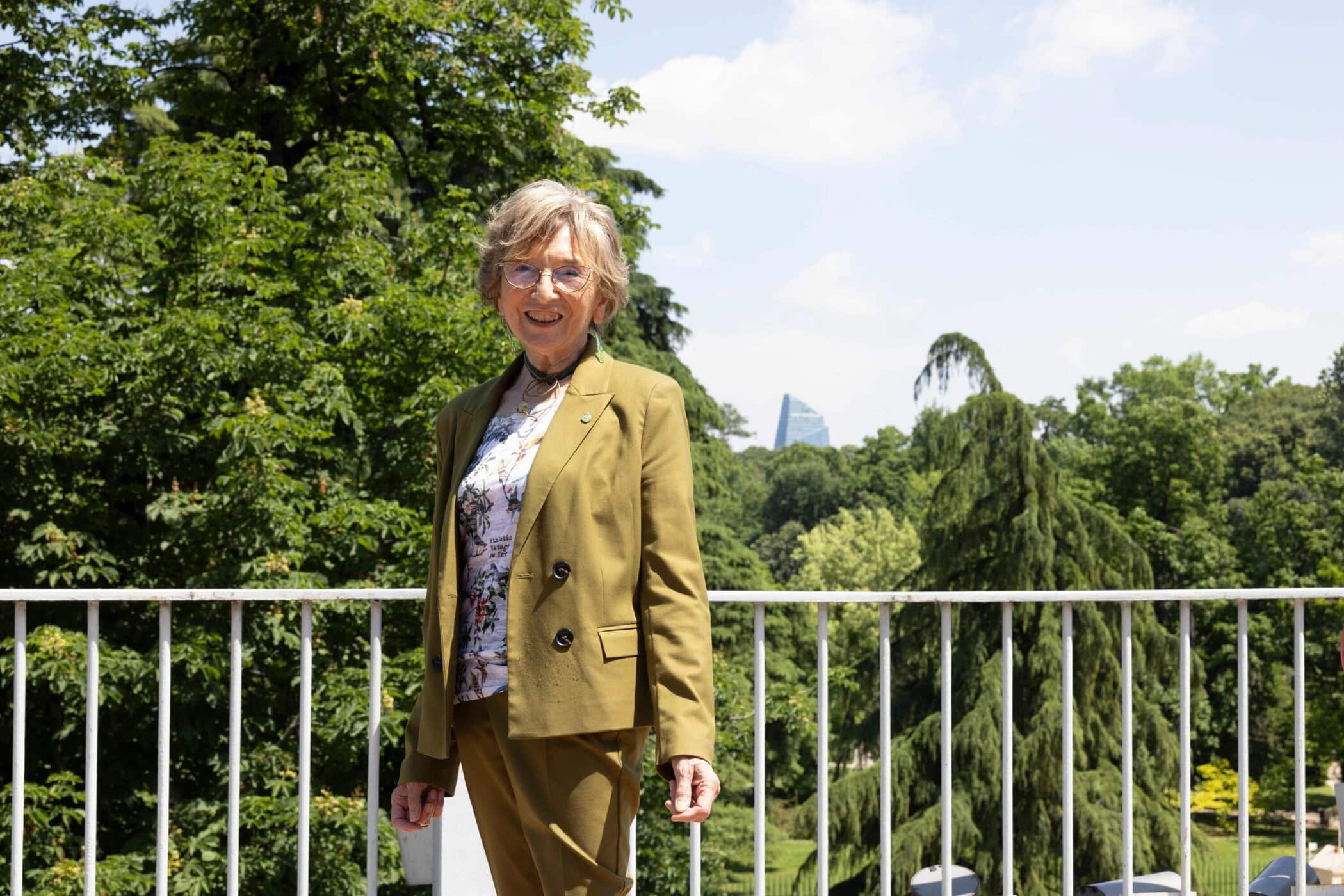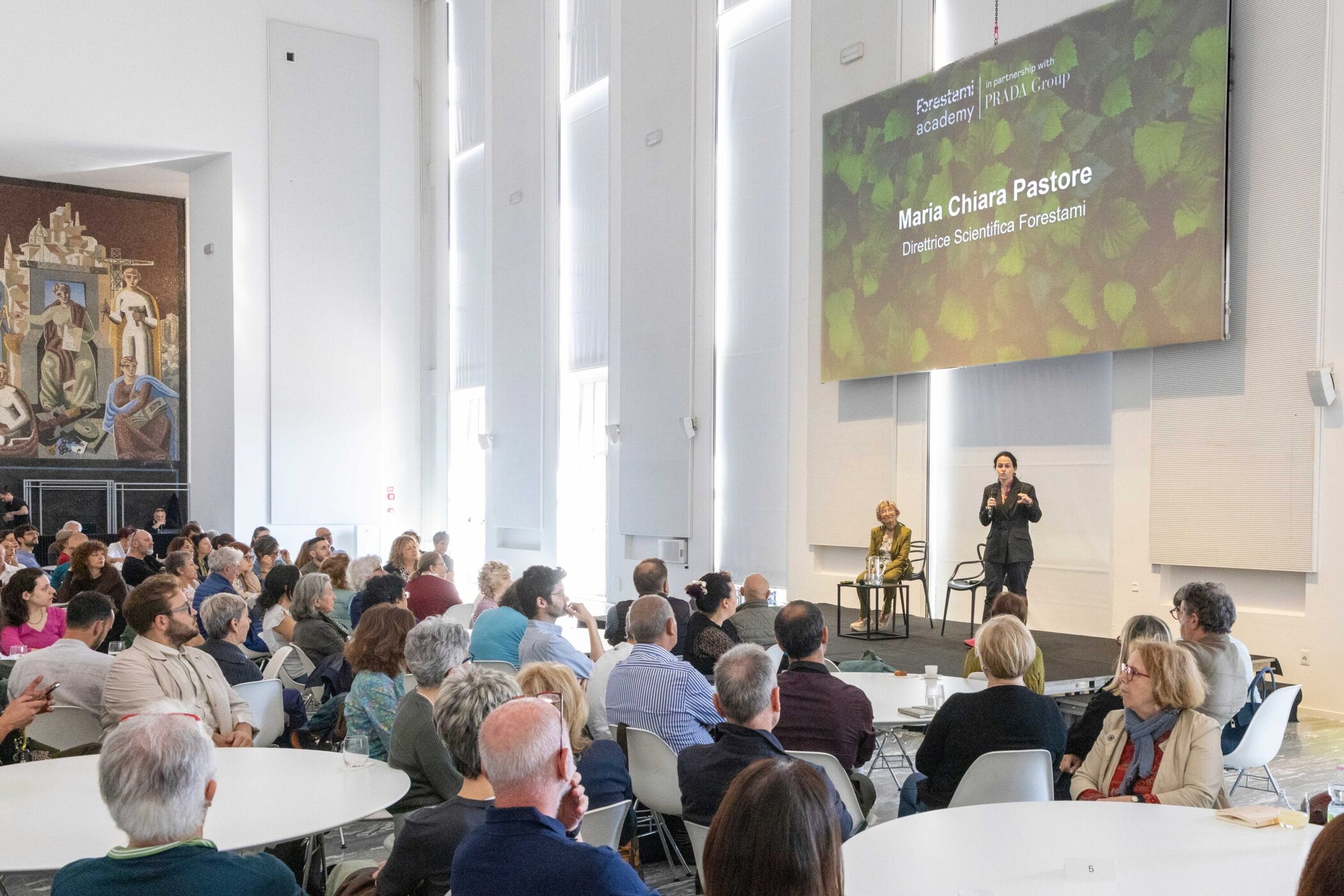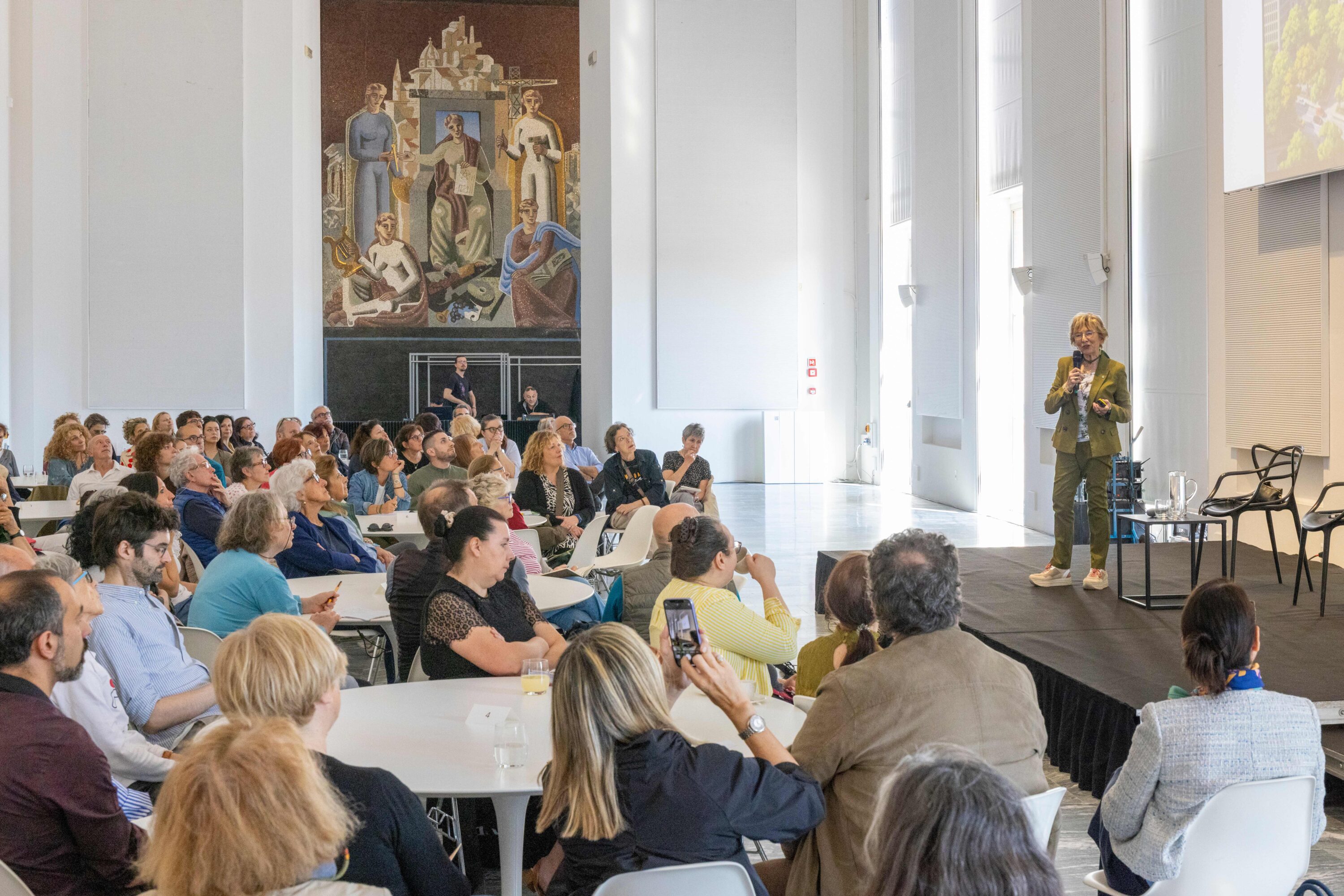Forestami Academy opens 2025 with a science-led look at plants as vital urban infrastructure
The third edition of Forestami Academy opened this week at Triennale Milano with a lecture titled “Plants in the City”, part of the ongoing educational initiative co-developed by Forestami and the Prada Group. The program aims to deepen public understanding of the role nature plays in urban environments.
The event featured Professor Paola Bonfante, a leading Italian expert in plant microbiology, who delivered a compelling talk on the complex relationships plants form—with microbes, soil, animals, and one another—and the importance of integrating greenery into city planning with scientific awareness and equity.
Quoting biologist Edward O. Wilson, Bonfante opened with the idea: “Let’s give more space to nature, actually, let’s give it half the earth.” She went on to challenge the notion of plants as isolated organisms or mere aesthetic enhancements, noting, “No man is an island, entire of itself; every man is a piece of the continent, a part of the main.” The same, she said, applies to plants: “They have not lived alone, but within complex networks of relationships,” particularly with microorganisms that remain largely invisible but are essential to ecosystem function.
Throughout the lecture, Bonfante underscored the risks posed by climate change and unchecked urban expansion. Topics included the degradation of urban soil, carbon absorption, plant species selection, and how greenery, if unevenly distributed, can become a factor of social inequality. “Urban greenery cannot be considered as decoration alone: it is a living, dynamic and multifactorial system,” she said, calling for greater scientific and political attention to green infrastructure.
The morning concluded with a guided walk through Parco Sempione, where participants identified various tree species with the help of experts from Parco Nord Milano.
The Academy’s next sessions will take place on June 18 and in September, with the final meeting including another outdoor experience. This year’s opening made a clear case: to understand cities, we must first understand the living systems within them.





